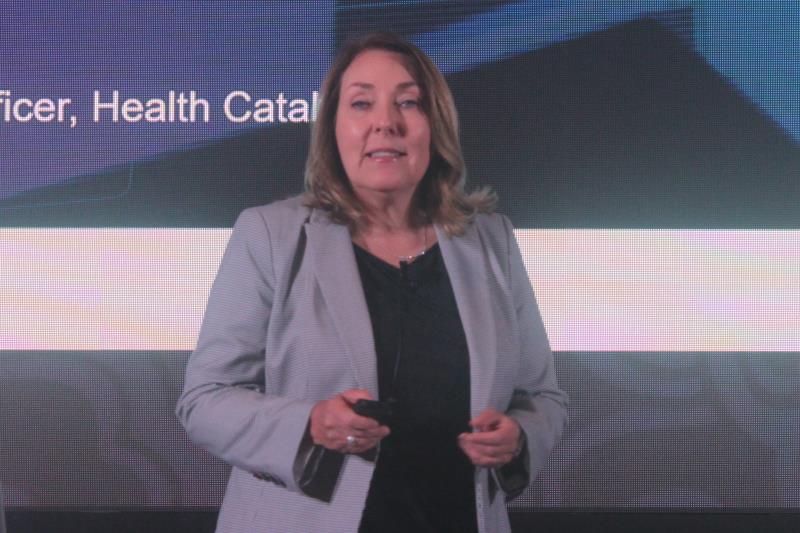 Holly Rimmasch at the HIMSS Asia Pacific Conference 2019
Holly Rimmasch at the HIMSS Asia Pacific Conference 2019A set of transformative activities and investments is key to support delivery of the highest quality and most cost-effective care for patients, according an industry leader who spoke at the recently concluded Health Information and Management Systems Society (HIMSS) Asia Pacific Conference 2019.
Holly Rimmasch, chief clinical officer of a leading provider of data and analytics technology and services to healthcare organizations, defined the key areas that should be taken when moving towards value-based care, namely data, analytic, and payment and care transformation. This transformation framework, she said, is followed fundamentally as a basic way to start.
The first area, data transformation, is where population health management (PHM) leadership needs to lay groundwork for high-functioning analytic platform. To do this, many organizations start with claims or payments data, according to Rimmasch. Additionally, they educate stakeholders on the available data, define supporting logic such as attribution, and invest in staffing.
Next is analytic transformation, which entails pulling the whole team together, the speaker said. Activities include ensuring baseline understanding of current requirements and goals, interviewing stakeholders for context, assessing available data to identify quick wins and long-term focus areas, synthesizing and prioritizing opportunities, and planning for ongoing evaluation.
Rimmasch described the said area of transformation as an important step where the organization and its team jointly think about the data, learning from it and prioritizing. Meanwhile, the last two areas—payment and care—are where transformation takes place.
“Payment transformation is an important component to think about,” she said. “So if you’re doing … fee for service and then you start doing some value-based care, at what point do you make a decision if you can change the way the organization works and not financially be stable enough to actually do the work you need to do,” she said.
In such area of transformation, financial leadership therefore balances risks and helps set a sustainable course forward. Key activities include aligning PHM with financial plans, looking to benchmarks to set expectations, ensuring compensation for value provided, pacing utilization efforts, and improving ability to understand true cost of care.
Finally, “care transformation [is] where we really start to change care, we streamline our way we think about quality measures… [and] we optimize our care management,” Rimmasch said. “That’s an important aspect as we think about value-based care.”
According to the speaker, following the framework will help organizations ensure in short-term that they meet requirements in fee-for-volume contracts while remaining successful in fee-for-service business. In long-term, they should be able to start providing better quality of care at lower costs and foster a healthier community.
Rimmasch stressed that the framework is not a one-time cycle, but a cycle that continues to happen primarily from the analytic, payment and care transformation.
In parting, she highlighted that organizations going along the value-based care journey need to have a balanced approach, focusing in equal parts on defining best practice, analytics and adoption to deliver outcomes improvement, while aligning it with their financial sense.